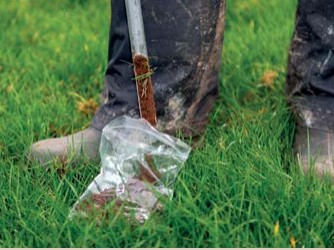
A global pandemic has few positives, but if I were asked for any I would say the rise of the webinar. As soon as the first lockdown was imposed physical farm events were ended. Participation and involvement in farm shows, auctions and meetings could only be done by farmers and others using software applications such as Zoom, Teams and other programs they had never used before. Over the time they have become so familiar even grandparents are using them to keep in touch with friends and family. While it may be a poor substitute for face-to-face human contact provides, online has become remarkably popular.
Lockdown was as if someone had pressed ‘fast forward’ on the internet. Websites like The Farming Forum, Farm Marketplace and Farm Classifieds with which I’m involved suddenly saw a big increase in traffic. Farmers and others who previously were not interested in digital coms were forced to try – and liked the experience. Meeting online has its problems – broadband connections which let users down at a critical moment; people talking over one another; or that funny moment when a meeting participant speaks up… with microphone still on mute! But these downsides are heavily outweighed by the accessibility that the almost limitless geography of the internet offers.
Attending a meeting or event prior to Covid Lockdown often involved a full day, travelling (with environmental impact of course), small talk before and after, lunch and multiple coffee breaks. All reduce the efficient uptake of the information you had really come to digest. In contrast an online event allows you to turn up just moments before proceedings start. There’s no travel time and cost. But most importantly the internet allows an infinitely wide range of both speakers and participants. As a BASE UK committee member, I have been involved in helping organise speakers for the group over several years, and our choices have often been limited by both the speaker’s diary and more often geography.
Flying in speakers from New Zealand, Australia or the Americas is simply just too expensive, yet these are some of the most knowledgeable soil and No-till people in the world and ones which BASE members want to learn from. Online meetings have made such speakers accessible. In a year when BASE and others might be expected to struggle to do its work, it has in fact done more than ever and membership has grown to new highs as a result. Hopefully we will not abandon Zoom when lockdown and travel restrictions become distant memory.
Farming and carbon trading
Some of the most exciting meetings I have attended have been based around carbon sequestration and storage, and how farmers will be able to sell this and other ecosystem capital benefits in the future. While DEFRA’s ELMS scheme (now known as the Sustainable Farming Incentive “SFI”) has bold vision to pivot production-based subsidies to natural capital and public goods payments, the complexities of creating trading systems for Carbon seems now to be a step too far for them to get involved in. This has created an opportunity for the private sector to provide certification and trading of this farming asset.

The first point of difficulty when selling Carbon is working out how much (if any) you have available for sale. This is anything but easy. The current debate involves the way carbon is accounted. It’s been suggested that a farmer using synthetic fertiliser should have all the Carbon produced in its manufacturer on his balance sheet. To me this is an utter nonsense. Are we really suggesting that Yara, Europe’s biggest user of natural gas, is carbon neutral? If a fertiliser manufacturer is going to push its carbon footprint onto me then I’m going to push mine on to my grain customers, and logically they then will pass it to theirs’. So the entire carbon footprint of everything ends up with the consumer, who can do little about it. Far more logical and consistent is for each part of the chain to take responsibility for the carbon they directly produce. Removing the crazy idea that a farmer is responsible for carbon involved in the production of synthetic fertilisers makes UK agriculture suddenly look a lot more like a net zero, and those of us in regenerative farming have a new product to sell.
So far the official focus is on the sequestration of carbon, – its removal from the atmosphere is what we all want. But of equal yet often neglected importance is the storage service that farmers and land managers provide. A scheme that currently pays to plant a tree is only positive while the tree is growing. Cut it down, use it for fuel, and the saving is all lost! How do we sell and guarantee both future storage as well as the tools for carbon removal?
Measuring carbon quantities
Then there is measurement – how much carbon do you have in your soil? Soil sampling is a huge can of worms (pun intended) with so many different opinions and issues around consistency. Right now soil sampling has very little to offer to quantification. Then there are the “desktop” assessments. Back in 2016 when I won the Farm Carbon Toolkit Soil farmer of the year, I used their excellent carbon calculator tool (an exercise I would recommend to all). It gives an excellent value for an individual impact and indicates where improvements can be made. These simple tools sadly lack the ISO accreditation that buyers of carbon require to have confidence to purchase. More complex ISO certified desktop quantification models exist, but are expensive and complex to use. Currently I am trailing and helping adapt a system already in use in other countries.
If successful it will become the backbone of the Gentle Farming programme which aims to sell ISO certified carbon as a premium brand. It recognises the ecosystem gains of regenerative agriculture, and not simply the carbon sequestration and storage. My fear is that carbon trading may ultimately become a race to the bottom with carbon brands that fit well with buyers’ corporate responsibility but which provide farmers with a poor return for the valuable environmental service they provide. Carbon markets are simply not going to grow until credible assurance exists that makes purchase possible now or in the future when incentivised through offsetting taxation.
Following 20 years of Red Tractor’s complete failure to make the UK food assurance scheme into anything which provides UK farmers with a premium, ‘assurance’ is a word that fills me and many other UK farmers with fear. Food assurance has instead just become another unwelcome cost that places us at a competitive disadvantage to imports with no farm level assurance at all. As well as being at the centre of various food safety scandals itself, Red Tractor often confuses consumers with its inconsistent and complex standards, and, as the logo is rarely if ever used on bakery and cereal products, Red Tractor is of no value whatsoever to grain producers. Another positive of the pandemic surfaced when farmers put their new found use of social media and online meetings to use in making their feelings clear. I have no doubt that changes originally intended will now be very difficult to make, and the entire value of keeping the scheme is now under question. It has been fantastic to see farmers represent themselves in this way.
If Carbon has the potential to be farming’s ‘gold rush’ we must vigorously resist those with such a proven track record of failure getting involved. It was alarming to hear Red Tractor CEO Jim Mosley talk about their ambition to become a condition of, or the ‘assurance’ behind, ELMS. Carbon storage and sequestration will be inevitably be linked to future environmental schemes and farmers should develop this new product themselves and let markets decide its value. The last thing we need is more costly assurance that comes without securing a premium.